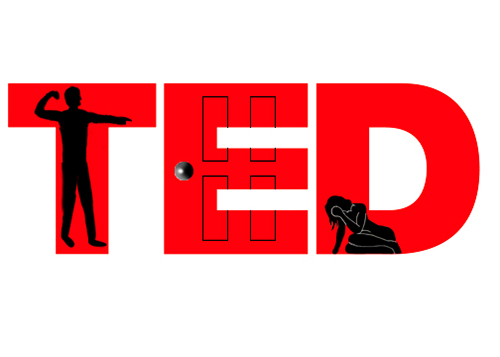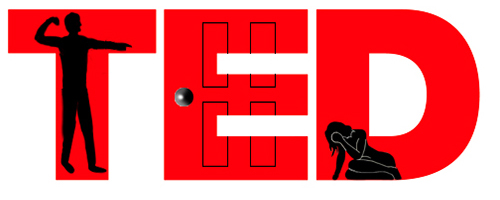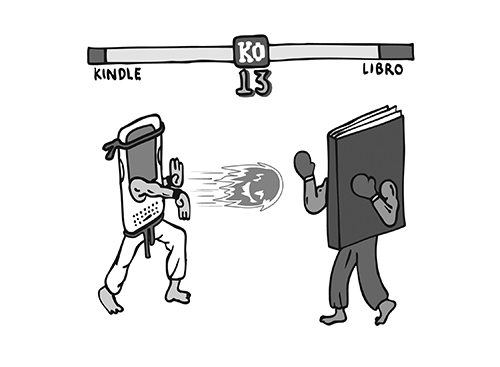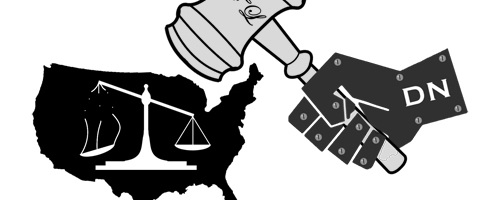As the Benghazi hearings continue to rehash the difference between calling something an “act of terrorism” or a “demonstration” and the incredibly complex meanings of each, they bring to the forefront the intrinsic significance of language and its role in creating the world we live in.
Domestic violence—just a women’s issue?

As the Benghazi hearings continue to rehash the difference between calling something an “act of terrorism” or a “demonstration” and the incredibly complex meanings of each, they bring to the forefront the intrinsic significance of language and its role in creating the world we live in.
I was reminded of this again while watching a TED Talk recently. TED (short for Technology, Entertainment, Design) is where I go to church, and I most definitely had a religious experience with this particular talk. The speaker was Jackson Katz, and his speech was called “Violence and Silence.”
First of all, it rhymes. While I’m pretty sure Katz wouldn’t call himself a poet, he is. With only his words he succeeds in telling a story that creates something new, that shifts your eyes from one place to another, that takes power from and gives power to us. Like I said, religious experience.
Katz, according to his website, is “an educator, author, filmmaker and social theorist” whose work addresses violence, media and masculinities as well as gender violence prevention. On this particular day he spoke to a mostly female audience about what many consider to be a major women’s issue, domestic violence—and explained how it’s really not.
In the video, he writes a sentence on a board and then takes us to school, showing how with four simple flicks of his wrist he can change the course of a story.
Here’s how:
John beat Mary.
Mary was beaten by John.
Mary was beaten.
Mary was battered.
Mary is a battered woman.
In the matter of a few changes to one sentence, the focus on John is lost—he has “left the conversation,” Katz says. At the same time, the action done to Mary has now become her identity.
Of course it’s far more effective when Katz does it, but its shocking to realize how true this is. You always hear conversations on the issue of domestic violence from the context of the victim. There are “battered women’s shelters” and, of course, the age-old question of why she stays with him. Why doesn’t she just leave?
Katz points to these questions—questions that he says are birthed out of a “cognitive structure that is set up to blame victims.” By fixating on women and the complexities of their victimhood, we continue to look through a grievously defective lens. While Katz clarifies that asking questions about women is of course extremely important, he argues that the problem of domestic violence will never be solved until we start asking what’s going on with our men. Until we ask why so many men rape, abuse and beat the women that in many cases they love.
Those aren’t the questions we’re used to asking. While we’re busy wondering what she was wearing at the party or why she went up to his room, we forget all about him and who he is. Yet we’re comfortable enough when we see him behind bars. We’re not really that interested in why he did what he did.
This struck me as incredibly backward, but completely par for the course. We want monsters to be caught and thrown away. The problem is that they’re not monsters; they’re the men in our lives whom we adore. Our sons, our brothers, our partners. They don’t have scales all over their bodies.
Katz argues that the problem of domestic violence is absolutely a men’s issue, because the “same system that produces men who abuse women produces men who abuse other men.” The millions of traumatized little boys who have grown up either experiencing or witnessing violence are usually the ones who turn around and do the same.
And we have the gall to say it’s just a women’s issue. Check the gender box.
When did things become men’s or women’s issues? I can’t think of any one problem facing society that belongs strictly to one gender. When something affects one of us, it affects all of us. But we’ve split ourselves along gender lines and told each other not to cross them for fear of retribution or ridicule.
The powerful thing is that, if our language can divide, it can also unite. It can cause us to ask questions instead of thinking we always know the answers, and it can push us out of our little boxes to say “we” instead of “us” and “them.” Maybe then we’ll understand who it’s really about.





